The Invisible Woman, The Mummy's Hand (1940)
Directed by: A. Edward Sutherland, Christy Cabanne
Written by: Curt Siodmak, Griffin Jay, Joe May, Maxwell Shane
Starring: Dick Foran, John Barrymore, John Howard, Peggy Moran, Virginia Bruce, Wallace Ford
In the middle of the Egyptian desert, Andoheb travels to the Hill of the Seven Jackals in answer to the royal summons of the High Priest of Karnak, who explains the story of Kharis, the priest who, in Ancient Egypt, stole the sacred tana leaves in the hope of restoring life to the dead Princess Ananka. His penalty upon being discovered was to be buried alive with the tana leaves. During the full moon, a brew made from the leaves can bring Kharis back to life to kill despoilers entering Ananka’s tomb. Meanwhile in Cairo down on his luck archaeologist Steve Banning and his sidekick Babe Jensen find the remnants of a broken vase in a bazaar. Convinced the hieroglyphics on it tell the location of Ananka’s tomb, Banning gets funding from a magician called Solvani and, with Solvani’s daughter Marta and Dr Petrie of the Cairo museum, set off for the tomb, despite warnings from Andoheb…..

The Mummy’s Hand is an often entertaining but curiously structured and rather unsatisfying film that seems to be generally well regarded, but which I can’t entirely see why. The aim was obviously to take some of the ideas from The Mummy and turn them into a much simpler, straightforward affair, with the poetry, mystery and downbeat feel of that film replaced by more straightforward ‘B’ movie thrills and a lighter tone. The title character is no longer a deadly love-sick magician who can kill from a distance but a robotic killing machine at the beck and call of a master. It was this movie that introduced the type of movie mummy that cemented into the public consciousness, the emotionless bandaged terror lumbering towards victims with an outstretched arm. Nothing wrong with that, but The Mummy’s Hand only revives its mummy two thirds of the way through its short running time, a serious flaw that the film never makes up for. For much of the running time, it’s basically a comedy, and a mediocre one at that, though it does get pretty exciting towards the end and overall the film can still be reasonably good fun if you know what you’re in for.
The changes made to the basic concept, such as the Mummy being nothing more than an actual mummy, and the method of revival being ‘tana leaves’, three of which bring him back to life and nine give him great strength [I wonder why nobody ever gave him more than nine?], were obviously also done to make it easier for there to be further Mummy films after The Mummy’s Hand. Now with most of these later sequels, I am unable to tell you much about the creation of the screenplay or indeed the making of the film, because there isn’t much on record to tell; these 40’s films were generally churned out quickly and simply, with little alterations from the initial script. This particular movie was directed by Christy Cabanne, a prolific director since the silent days but with little of real note to his name, and writers Griffin Jay and Maxwell Shane were strictly ‘B’ movie people. Money was saved by using a large temple set from a James Whale movie Green Hell and flashback footage from The Mummy. The film was commercially successful and its final reels were considered very scary at the time, though reviews of most of these 40’s efforts were generally average.
We open with one hand-over from the Boris Karloff film, a pool into which flashbacks can be seen [well, it’s convenient], and then the earlier flashback itself. New star Tom Tryon is nicely cut in to the original footage, which is somewhat cut down and in particular missing that shot of the guy impaled by a spear! Then we cut to Cairo, and the film goes downhill very quickly when we are introduced to and spend a lot of time with our two heroes. Steve Banning is fairly likeable, a regular guy just looking for a break, but Dick Foran’s performance is really stiff. His friend Babe Jensen though, played by Wallace Ford, is just an irritating, smarmy, wisecracking annoyance whose antics get tiresome very quickly, especially when he buys a mechanical doll which he calls ‘poops’ and keeps talking to it. At least ‘The Great Solvani’ soon makes an appearance, and this unsuccessful magician is a rather sad and interesting character, who can’t stop pulling things out of his clothes but who seems to do it for attention. He’s also a very useful guy to have in a bar; short on drinks, he just pours booze out from his hands!
Eventually, after much yapping and failed laughs [though there is a quite funny bit when Solvani tries to get Banning to fake-swallow a rock and Banning keeps doing it for real], everyone finds themselves at the tomb, with the journey given about two seconds. Surely the film would have been much better if less time had been spent in Cairo and more spent on the journey, because it would have given it a bit of building tension? Still, the final twenty five minutes do provide us with the thrills we have been waiting for and almost save the film. There’s a really creepy bit where Dr Petrie is made by Andoheb to approach the Mummy, which is lying down but certainly alive, and feel its pulse. Cabanne and cinematographer Elwood Bredel make the Mummy have an uncanny knack for appearing on the edge of the frame, as if he has been caught by the camera by mistake. The idea of putting the tana leaves with the victims-to-be so the Mummy, who is addicted to the leaves, can kill them as he locates the leaves, seems a little stupid though. Surely if Andoheb can sneak into people’s tents while they are asleep and hide things there, he could quite easily dispatch them himself and wouldn’t need the Mummy much at all?
The script is full of awkward bits and pieces like this. Andoheb suddenly decides he wants Marta to be his bride for eternity, with no build up to the matter. The discovery of Ananka’s tomb right at the end is given no emphasis at all; we just end the film with the protagonists heading home to the United States with the mummy of Ananka and spoils from the tomb. The presentation of the Mummy though is very effective. Though he moves very slowly, shuffling along dragging an arthritic leg behind him, he remains an effective menace, especially when close-ups of his face have the eyes and inside of his mouth blackened out; it looks very good indeed. Overall there’s not enough atmosphere, though slow motion shots of a baying wolf are rather nice. The re-used temple set, with its huge rooms and gigantic flight of outdoor steps, does give the impression of a bigger budget than was available, though it doesn’t look very Egyptian – that’s because in Green Hell it was an Inca temple!
Some of the Mummy scenes notwithstanding, I don’t think Cabanne was much of a director; bits of the editing between scenes is really amateurish, as if parts of scenes are missing, though I don’t think they are. Tom Tryon is imposing enough as the Mummy and somehow brings just a touch of pathos to the role of this poor creature, brought to life against his will and under the control of a drug. Aside from Cecil Kellaway as Solvani, performance-wise the film belongs to George Zucco [possibly the screen’s greatest Professor Moriarty] as Andoheb – he’s very smooth and sinister without ever hamming it up. Peggy Moran as Marta is okay; of course by the end of the film her and Banning are ‘together’ though we haven’t really been shown a relationship forming earlier. Something that, this time, took me out of the film a bit was the re-use of much of Hans J. Salter’s score from Son Of Frankenstein; even the main titles are the same. The mostly menacing, ramped-up nature of the music still works well though, and there are the occasional new bits and pieces to listen to. Overall The Mummy’s Hand is half a good film, half a poor one, and remains in my opinion [though it’s not a common one] the weakest of the Universal Mummy movies, though during the times it is actually good, it sometimes gets very good indeed.
Rating: 









Financed by fatuous playboy Richard Russell who has ran out of money, Professor Gibbs invents a strange contraption that can bestow temporary invisibility, and first tries it out on his cat, which after a few hours returns to visibility. He then places an advertisement in the local newspaper asking for a guinea pig. Instead of the expected male applicant, it’s a woman who answers the call, a certain Kitty Carroll, a model who has just been fired from her job by her grouchy, cruel boss Mr Growley who torments his employees. The experiment succeeds, and Kitty’s first act is to pay a visit to her terrified boss, but the ad has also turned up in the Mexican hideout of mobster Blackie Cole, and he decides he wants the invisibility device for his own nefarious purposes………..
For a while, I couldn’t decide whether to review The Invisible Woman or not. In working my way through the Universal horror movies, I have left out films which are generally not considered part of the series, even though they may contain some similar elements; films such as the science fiction thriller The Invisible Ray, which saw Boris Karloff and Bela Lugosi together again, and the historical drama Tower Of London, where Karloff played Richard the Third and was reunited with his Son Of Frankenstein director Rowland V. Lee. The Invisible Woman though is a different case. In no way is it a horror film, yet it is most definitely part of The Invisible Man series, and so in the end I decided to review it, as I will the next movie in the series, The Invisible Agent. Moving away from the melodramatic and macabre elements of the proceeding two entries, The Invisible Woman is a goofy, unsophisticated comedy that, even if you’re disappointed by the lack of horror or even thrills, should certainly bring a smile to your face and actually made me laugh very much indeed!
After The Invisible Man Returns had been a solid success, it was decided that after The Mummy’s Hand, the next invisibility project would go into production but that this one would take the franchise into a different direction. The initial story was written by Kurt Siodmak and Joe May the writers of The Invisible Man Returns, then was turned over to comedy scribes Robert Lees and Fred Rinaldo. Director A.Edward Sutherland was known mostly for comedies and musicals though in 1933 he had made the rather grim Murders In The Zoo. Initial star Margaret Sullivan, despite owing Universal a film due to an old contract, felt the picture was beneath her and failed to show up for rehearsals. The studio responded by slapping her with a restraining order preventing her from working anywhere. Virginia Bruce stepped into the role and eventually Sullivan agreed to appear in another movie. The most interesting cast member though was probably John Barrymore, the great silent movie star whose career was almost ruined by alcoholism and who was appearing in films which were mostly unworthy of his talent. The Invisible Woman was budgeted at $300,000.00,which was almost twice the amount of a typical Universal B-feature of the time, and therefore had a hard time making its money back, though it was generally well received.
When you open with George the butler going down some stairs, tripping over an empty wine bottle and falling down them, only to then get knocked down again by the front door opening, you know this is not going to be a dark Gothic horror or a thrilling monster movie. It’s just going to be a silly comedy, and if, like me, you have a preference for the more stupid side of the comedy spectrum, you might have a ball. When Kitty becomes invisible, her first act is to take revenge on her boss, said character being the only really nasty character in the film [the inept hoodlums certainly don’t count!], the worst kind of manager who decks one employee an hour’s pay for being two minutes late and fires another for having a cold. Kitty terrifies Mr Growley in his office, moving things around, saying she is his “conscience” and trapping him in a window so she can smack his bottom. There is a slight element of comedic fear here, as you are instantly aware of what an invisible person can do, but this idea is not really followed though; everything is just played for laughs. There is much mention of the fact that Kitty is naked, something that was considered daring for the time [though in a typically sexist manner the same didn’t happen with Claude Rains’s and Vincent Price’s invisible protagonists], a budding romance between Kitty and Richard, and an intrusion by the gangsters which again is done mainly for laughs.
There’s nothing approaching real drama then, it’s nearly all knockabout slapstick and endless lines like: “Any girl that’d become invisible can’t be very easy on the eyes”. Virtually everyone bar Kitty, the Professor and Mr Growley is a total idiot. George is accident prone through and very very stupid. When asked to call the airport he calls out “Oh, airport”. Mob boss Blackie is prone to fits of crying. One of his henchmen, when asked to steal a car, returns with one displaying a “just married” sign on the back. Another ends up with a very high pitched voice when he enters the invisibility pod. Then again, when one of these fools is played by one of the Three Stooges, you would expect nothing less than this kind of thing. Even Richard is made to look stupid in many scenes, such as kissing an invisible hand. One bit that really cracked me up has Richard and Gibbs carrying Kitty in a rolled up carpet, Richard holding her head and thereby looking like he is carrying nothing, just moving backwards with his arms out like an idiot. This is pure silliness through and through, the kind of comedy that kids can enjoy as much as adults, and sometimes the kind of comedy I like best. If one bit doesn’t make you chuckle, the next bit probably will, and this keeps proceedings moving at a lively pace even when the actual story moves very slowly.
It’s interesting that in this movie the invisibility is caused by something more elaborate than just a drug. Gibbs has a huge, very peculiar looking machine, with what look like little bits of Frankenstein’s equipment scattered around here and there, and a pod which people have to go in to transform, The Fly-like. John P. Fulton outdoes himself with the special effects, which were Oscar-nominated and which should have won. He allows us to see a Scotch being poured into a glass [that must have taken forever to get right], Kitty’s legs beginning to form when the invisibility starts to wear off in a very convincing bit of business, and the by-now-familiar gags of clothes moving around with an invisible wearer looking even smoother than before. I have read that you can sometimes see the outline of Kitty’s head; I can’t, so I would assume that it’s only visible on a very large TV.
Sutherland shows little style in his direction, but the enthusiastic contributions by virtually every cast member, most of whom would be recognisable to fans of old movies, go a long way in making up for this. Virginia Bruce is an immensely appealing heroine, though you will probably feel that her character is far too good for John Howard’s. John Barrymore’s ripe, hammy performance is entirely appropriate for his character, and you see him relishing the role and lines like: “You’re either victim….or chaperone”, said to Mrs Jackson his long-suffering housekeeper. The latter is subtly played by Margaret Hamilton, fresh from playing the totally different role of The Wicked Witch Of The West in The Wizard Of Oz, and I should also give special mention to Oscar Homolka’s Blackie, one of the oddest gang bosses in screen history. Frank Skinner, who for some reason goes uncredited, composed a nice lush theme for Kitty, emphasising her grace and style with a touch of sadness. Much of the rest of the score is comedic ‘mickey mousing’ [musically emphasising whatever is happening on screen], though it’s less frequent than many other films of the time. Perhaps it doesn’t make the most of its premise, but The Invisible Woman is tremendous fun, its lack of ambition and desire to just put a smile on your face being very appealing, and should certainly not be ignored for not being an actual horror film! Give it a go.
Rating: 










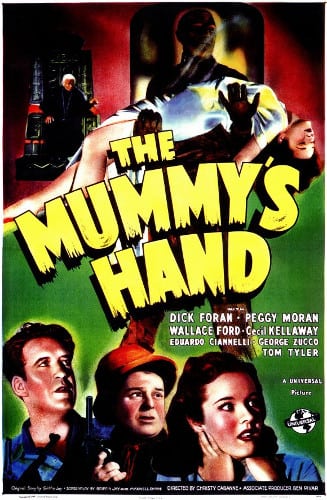

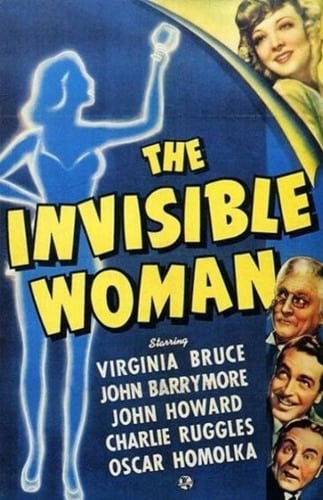
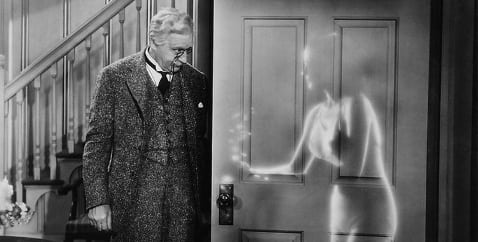
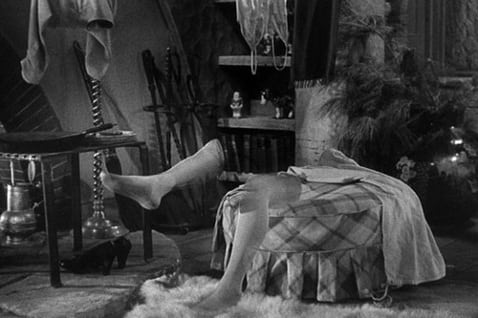

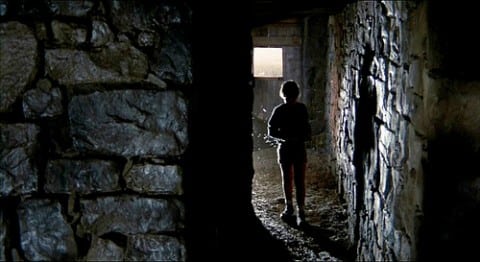
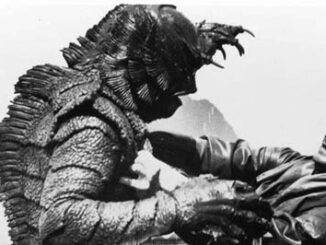
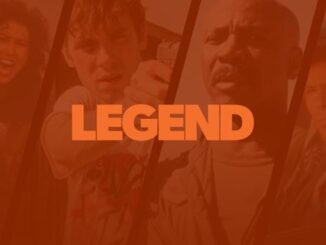
Be the first to comment